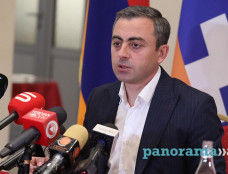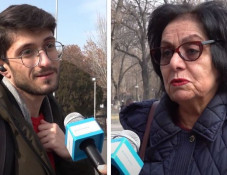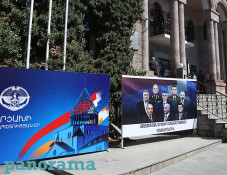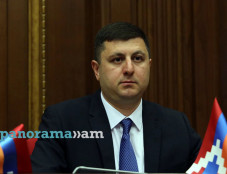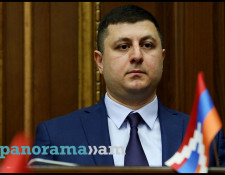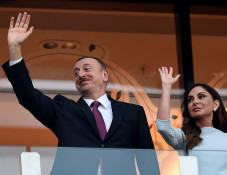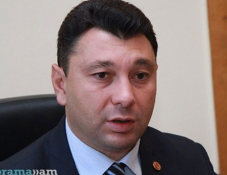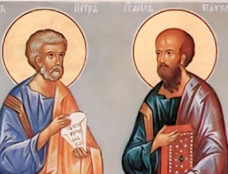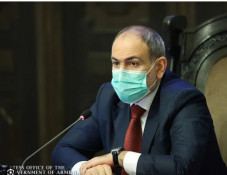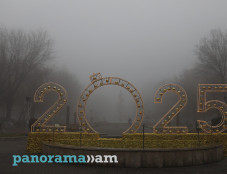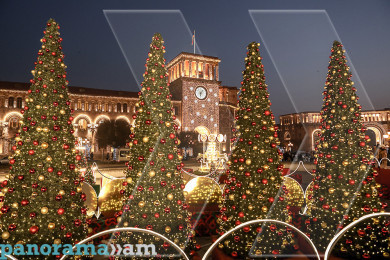
The New York Times: Turkey’s seizure of churches and land alarms Armenians
The New York Times writes on the Turkish government seizure of the historic Armenian Surp Giragos Church, a number of other churches and large swaths of property in the heavily damaged Kurdish city of Diyarbakir, saying it wants to restore the area but alarming residents who fear the government is secretly aiming to drive them out.
The source reminds that the city, in the heart of Turkey’s predominantly Kurdish southeast, has been the scene of heavy fighting for nearly a year, since the Turkish military began a counterinsurgency campaign against militants from the Kurdistan Workers’ Party. Surp Giragos, one of the largest Armenian churches in the Middle East, was damaged in the fighting and forced to shut its doors.
Both the Armenians, for whom Surp Giragos is an important cultural touchstone, and the Kurds have discerned a hidden agenda in the expropriations. They say the government plans to replace the destroyed neighborhoods they shared with other minorities with luxury rentals and condominiums affordable only to a wealthier, presumably nonminority class of residents.
“Solving ethnic and religious strife through demographic engineering is a policy of the Turkish government that goes back well over a century,” the paper quotes Taner Akcam, a prominent Turkish historian. “The latest developments in Sur,” he added, referring to the historic heart of Diyarbakir, “need to be viewed through this framework.”
The newspaper stresses that for the Armenians and the Kurds, distrust of Turkey’s intentions runs deep. “Armenians still have vivid memories of what historians now call the World War I genocide carried out by the Ottoman Turks, in which 1.5 million of their countrymen died, and the Kurds have fought the Turkish government on and off for generations.”
“Surp Giragos (“Surp” means saint in Armenian), which stands in Sur, closed in the 1960s for lack of parishioners but was renovated and reopened in 2011, part of a reconciliation process begun by the Erdogan government that has returned dozens of properties that the Ottoman Turks confiscated during World War I.
To many Armenians in the area, who lost touch with their family histories after the genocide and were often raised as Muslims by Kurdish families, the church has served as an anchor as they rediscovered their identities. These “hidden Armenians” emerged as Turkey relaxed its restrictions on minorities, but now they say they again feel threatened.
That helps explain why the government’s seizure of the church struck a particularly raw nerve with the Armenian diaspora and rights groups, who say the expropriation of religious properties and 6,300 plots of land in Diyarbakir is a blatant violation of international law.
“This is reminiscent of the events leading up to the start of the Armenian genocide on April 24, 1915, when properties were illegally confiscated and the population was displaced under the false guise of temporary relocation for its own protection,” the paper quotes Nora Hovsepian the chairwoman of the Western Region of the Armenian National Committee of America as saying.
“That temporary relocation,” she added, “turned out to be death marches and a permanent disenfranchisement of two million from their ancestral homeland.”
The developments in Sur have marred the steps taken by the Turkish government in recent years toward reconciliation with the nation’s Armenian population.
The paper recalls the historic Armenian orphanage, built by dozens of descendants of people who survived the genocide, was returned by the government to the Gedikpasa Armenian Protestant Church Foundation, after months of campaigning and the intervention of Mr. Davutoglu. At the time, Armenians worldwide hailed the decision as an example of how activism by Turkish Armenians could bear fruit.
But critics argued that the restitution of the land just before important elections was politically motivated, and said they doubted that other confiscated properties would be returned in a timely fashion.
That history, and the traumas associated with those bloody events, have been passed down through generations, and continue to reverberate among Armenians.
“We haven’t been able to go to the church for months, and it’s devastating to hear that it has been damaged in the fighting,” said Onur Kayikci, a Kurdish resident of Sur, who recently became aware of his Armenian ancestry. “For us, it’s not just a building or a place of worship. It’s where we would come to put together the pieces of our history and identity together.”
Newsfeed
Videos






